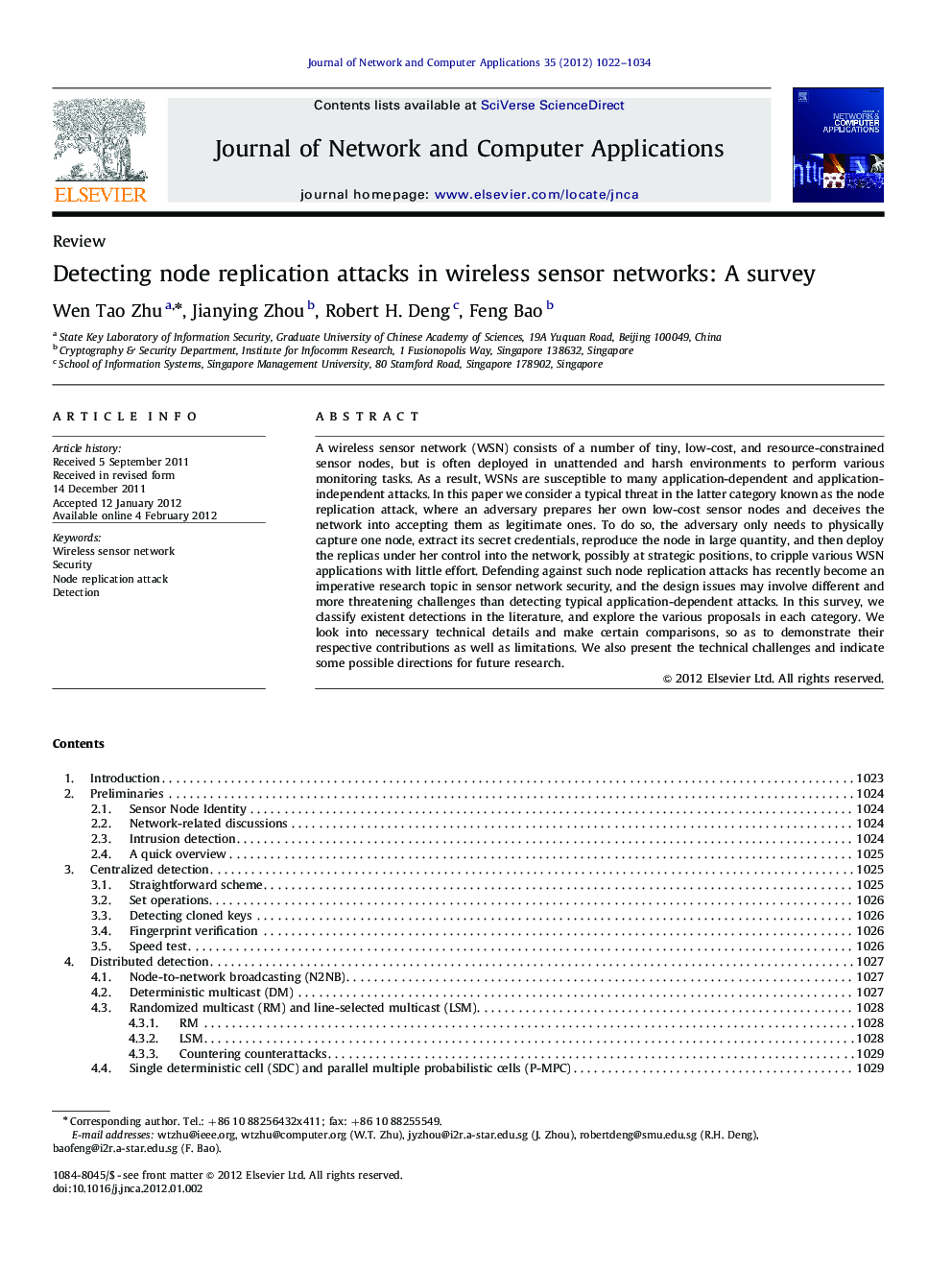| Article ID | Journal | Published Year | Pages | File Type |
|---|---|---|---|---|
| 460140 | Journal of Network and Computer Applications | 2012 | 13 Pages |
A wireless sensor network (WSN) consists of a number of tiny, low-cost, and resource-constrained sensor nodes, but is often deployed in unattended and harsh environments to perform various monitoring tasks. As a result, WSNs are susceptible to many application-dependent and application-independent attacks. In this paper we consider a typical threat in the latter category known as the node replication attack, where an adversary prepares her own low-cost sensor nodes and deceives the network into accepting them as legitimate ones. To do so, the adversary only needs to physically capture one node, extract its secret credentials, reproduce the node in large quantity, and then deploy the replicas under her control into the network, possibly at strategic positions, to cripple various WSN applications with little effort. Defending against such node replication attacks has recently become an imperative research topic in sensor network security, and the design issues may involve different and more threatening challenges than detecting typical application-dependent attacks. In this survey, we classify existent detections in the literature, and explore the various proposals in each category. We look into necessary technical details and make certain comparisons, so as to demonstrate their respective contributions as well as limitations. We also present the technical challenges and indicate some possible directions for future research.
